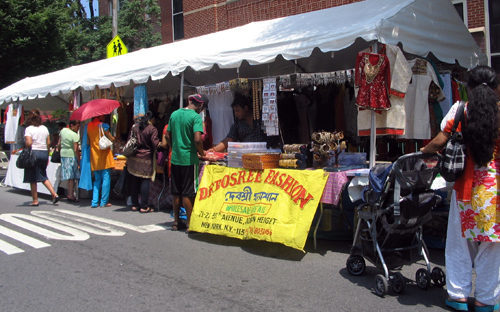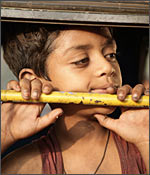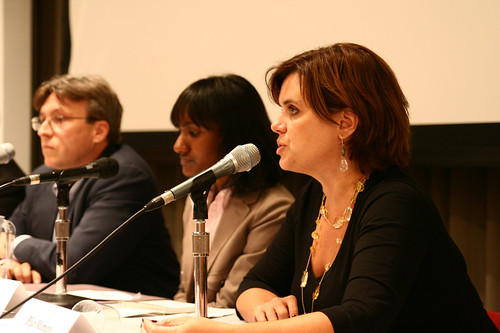By Diego Graglia, FI2W web editor

(Image: IBN)
WHAT: From India’s IBN news network: Terrorists equipped with heavy machine guns, including AK-47s and grenades, strike at the city’s most high-profile targets: the Chhattrapati Shivaji Terminus (CST) rail terminus; the landmark Taj Hotel at the Gateway, and the luxury Oberoi Trident at Nariman Point. Attacks started at Cafe Leopold, a place popular with foreigners. There were other shootouts at Cama hospital and near the Metro cinema.
From India Times: Terrorists struck in at least ten places. They took hostages at the Oberoi Trident, the Taj Mahal Palace and Tower Hotel, and Nariman House.
WHEN: The attacks started around 9.30 pm Wednesday in Mumbai, Wednesday shortly after noon New York time. Twenty-four hours later, as of Thursday evening in Mumbai, (11 am in New York) fighting continued, and explosions were reported at the Oberoi and Taj Hotel.
WHO: An unknown group, the Deccan Mujahideen, has claimed responsibility. India’s Prime Minister Manmohan Singh said, “It is evident that the group which carried out these attacks, based outside the country, had come with single-minded determination to create havoc in the commercial capital of the country.”
CASUALTIES: As of Thursday 11 am New York time, authorities were reporting 125 dead and 327 injured.
SCALE: From the International Herald Tribune: “Even by the standards of terrorism in India, which has suffered a rising number of attacks this year, the assaults were particularly brazen in scale, coordination and execution. The attackers moved against their targets after arriving at the Nariman Point district on boats.”
IMPACT: IBN says: “26/11/2008 will go down as one of the darkest days in the history of Mumbai and India. Life in the country’s financial capital remains paralysed as terrorists hold the city under siege. In a heinous terror attack that the country has seen in recent times, Mumbai came under an unprecedented night attack.”
LINKS: From The Associated Press: “Westerners in India’s financial center were targeted in the spectacular attack comprised of multiple, simultaneous assaults — a signature of past al-Qaida actions including the Sept. 11 attacks. But the Indian attack was carried out by gunmen and not the suicide bombers frequently employed by al-Qaida and its affiliates.”
From The Guardian: Linking the attacks to al-Qaida “was an immediate, simplistic — and probably misleading — response to the attacks on big hotels, seen as western targets, in Mumbai. Certainly, the terrorists appeared to be Muslim extremists. Although they must have assumed they were going to be killed even though they took hostages, the attackers were not suicide bombers, overt martyrs of the kind we have witnessed elsewhere — in London, Iraq, and now in Afghanistan — since the 9/11 attacks on the U.S.”

A FIRST-PERSON ACCOUNT: From India Uncut blog:
…we headed to All Stir Fry, the restaurant in the Gordon House Hotel in a lane down from there. They told us we’d have to wait 20 minutes. We stepped out again, and as we did so, we heard gunshots, and saw people running towards us from the left side.
One of the hotel employees rushed out and told us to get back in. “There must have been an encounter,” he said. “Get back in, you’ll be safe inside.”
We followed him in. We waited in the lounge-bar upstairs for a while. The big screen there was showing cricket. India won. Then someone changed the channel.
That’s when we realised that this was much more than a random police encounter, or a couple of gunshots. We heard that terrorists with AK-47s had opened fire outside Leopold’s, the pub down the road. We heard there was firing elsewhere in the city as well, including in the Taj. We watched transfixed, and as the apparent scale of the incidents grew, we realised we couldn’t go home. We asked if they had a room vacant; they did, so we settled in, switched on the TV, and watched in horror.






